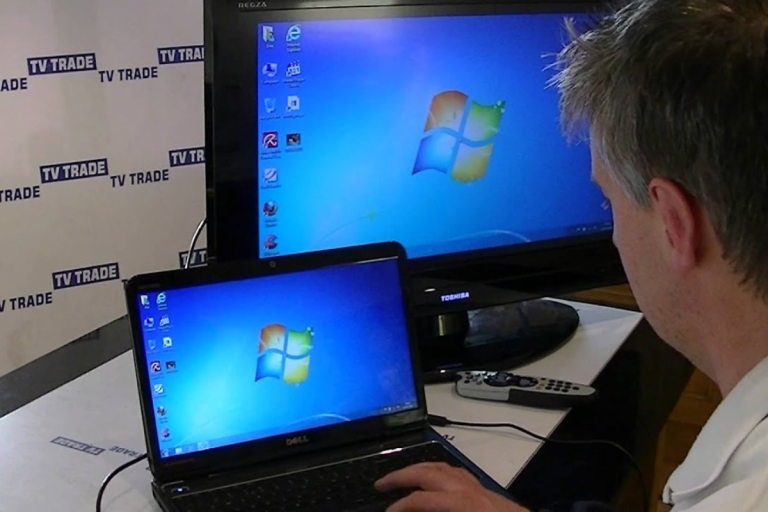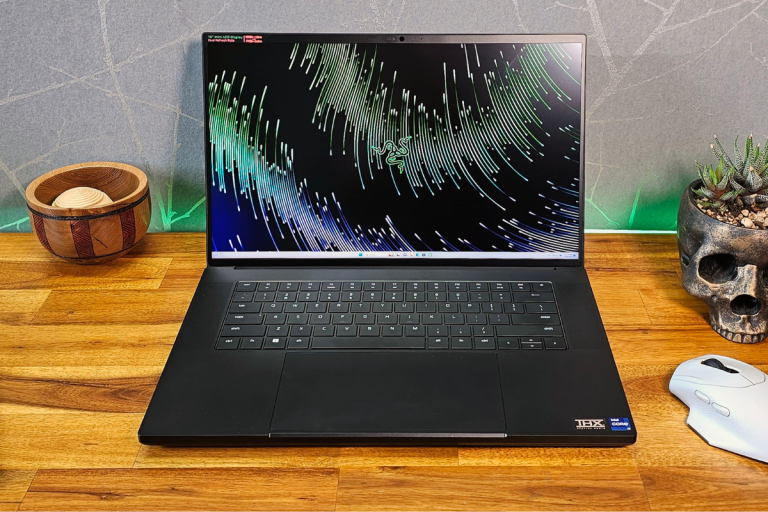5 The best laptop for machine learning 2024
Are you tired of waiting endlessly for your machine-learning algorithms to run? Frustrated by the limitations of your current laptop? Look no further! We provide the definitive guide to finding the perfect laptop that will supercharge your AI endeavors. Say goodbye to sluggish performance and hello to lightning-fast computations.
The best laptop for machine learning
| No. | Product Name | Check Price |
| 1. | Dell XPS 15 | Check Price |
| 2. | HP Spectre x360 | Check Price |
| 3. | ASUS ROG Zephyrus G14 | Check Price |
| 4. | Lenovo ThinkPad X1 Extreme | Check Price |
| 5. | Apple MacBook Pro | Check Price |
1. Dell XPS 15
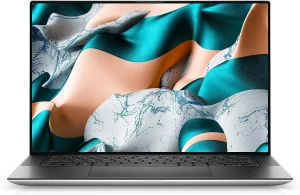
| Specification | Details |
| Touchpad Size | 62% larger |
| Screen Size | 5% larger |
| Footprint Size | 5.6% smaller |
| Display | 16:10 FHD+ with DisplayHDR 400 and Dolby Vision |
| Eyesafe Display Technology | Integrated |
| Audio | Quad speaker design with Waves Nx audio |
| Design | High-polished diamond-cut sidewalls |
As a machine learning enthusiast, I’ve spent countless hours searching for the perfect laptop to fuel my AI ambitions. And let me tell you, the Dell XPS 15 is a game-changer in every sense of the word.
The first thing that caught my attention was its stunning 16:10 FHD+ edge-to-edge display. With DisplayHDR 400 and Dolby Vision, the visuals are nothing short of breathtaking. Whether I’m analyzing complex datasets or training deep neural networks, the vibrant colors and sharp details make every task a visual treat.
But it doesn’t stop there. The Dell XPS 15 boasts a touchpad that’s 62% larger than its predecessor, offering a spacious and seamless navigation experience. Gone are the days of frustratingly small touchpads that hinder productivity. This laptop gives you the freedom to glide through your projects effortlessly.
One standout feature is the integrated Eyesafe display technology. With long hours spent in front of the screen, eye strain is a real concern. Dell has addressed this issue by incorporating Eyesafe technology, which reduces harmful blue light emissions while maintaining color accuracy. Now, I can work for extended periods without worrying about eye fatigue.
The quad-speaker design with Waves Nx audio is another highlight. The sound quality is exceptional, immersing me in a rich and crisp audio world. When I’m not crunching numbers, I can enjoy my favorite music or unwind with a movie, all without external speakers.
In terms of design, the high-polished diamond-cut sidewalls exude elegance and sophistication. It’s a laptop that effortlessly blends style with substance, making it a head-turner in any setting.
Pros:
- Stunning 16:10 FHD+ display with DisplayHDR 400 and Dolby Vision
- A larger touchpad for enhanced navigation
- Eyesafe display technology for reduced eye strain
- Immersive quad-speaker audio experience
- Sleek and stylish diamond-cut sidewalls
Cons:
- Limited customization options
- Slightly more expensive compared to other models in its class
2. HP Spectre x360

| Specification | Details |
| RAM | 16GB high-bandwidth |
| Storage | 512GB PCIe NVME M.2 Solid State Drive |
| Processor | Intel Evo platform 12th Generation Core i7-12700H with Intel Iris Xe Graphics |
| Display | 16-inch diagonal, 3K+ multitouch-enabled, IPS, edge-to-edge glass, micro-edge, antireflection Corning Gorilla Glass NBT, Low Blue Light |
| Connectivity | 2 x Thunderbolt 4 with USB4 Type-C, 1 x SuperSpeed USB Type-A, 1 x HDMI 2.1, 1 x Headphone/Microphone combo, 1 x AC Smart Pin, 1 x MicroSD Media Card Reader; Wi-Fi 6E + Bluetooth |
| Features | Backlit Keyboard, Fingerprint Reader, HP Rechargeable MPP 2.0 Tilt Pen |
| Operating System | Windows 11 Home |
When it comes to machine learning, the HP Spectre x360 is in a league of its own. This laptop embodies power, style, and versatility, making it the perfect companion for any data-driven endeavor.
Boasting a high-bandwidth 16GB RAM and a lightning-fast 512GB PCIe NVME M.2 Solid State Drive, this laptop can handle the most demanding machine learning applications with ease. It effortlessly juggles multiple applications and browser tabs, ensuring a smooth and efficient workflow.
Under the hood, the Intel Evo platform 12th Generation Core i7-12700H processor with Intel Iris Xe Graphics delivers unparalleled performance. With 8 efficient cores, 6 performance cores, and 20 threads, this laptop is a true workhorse. From training complex neural networks to running resource-intensive algorithms, the Spectre x360 rises to the challenge every time.
But it’s not just about raw power. The 16-inch diagonal 3K+ display is a visual masterpiece. With edge-to-edge glass and Corning Gorilla Glass NBT for added durability, this multitouch-enabled IPS display brings your data to life. The anti-reflection coating and low blue light technology ensure eye comfort during those long hours of analysis.
Connectivity is a breeze with Thunderbolt 4, USB Type-A, HDMI, and a MicroSD Media Card Reader. Whether you need to transfer data quickly or connect to external displays, the Spectre x360 has you covered.
One of the standout features is the backlit keyboard, which allows for seamless typing even in low-light environments. The fingerprint reader adds an extra layer of security, ensuring that your valuable data remains safe.
Pros:
- High-performance RAM and spacious storage
- Powerful 12th Generation Intel processor with Iris Xe Graphics
- Stunning 3K+ display with anti-reflection and low blue light
- Versatile connectivity options
- Backlit keyboard and fingerprint reader for convenience and security
Cons:
- Slightly heavier compared to other models in its class
- Limited upgrade options for RAM and storage
3. ASUS ROG Zephyrus G14
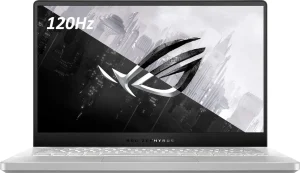
| Display | 14in Full HD Display with 1920 x 1080 Resolution with 120Hz refresh rate |
| Processor | Latest AMD Ryzen 9 4900HS(beat 10th Gen Intel Core i7-10750H), 8 Core processor up to 4.30GHz |
| Storage | 1TB SSD |
| RAM | 16GB DDR4 RAM |
| Graphics | NVIDIA GeForce RTX 2060 Max-Q graphics Backed by 6GB GDDR6 dedicated video memory, Virtual Reality Ready |
| Audio | Speakers with Smart AMP Technology and Dolby Atmos, Two 2.5W speakers produce incredible Dolby Atmos sound |
| Connectivity | Wireless/Wired connectivity (WiFi 6 – 802.11 ax) |
| Keyboard | Chiclet keyboard with white backlight, Allows you to enjoy comfortable and accurate typing, even in dim lighting |
| Weight | Weighs 3.64 lbs. |
| Thickness | Measures 0.7″ Thin |
| Operating System | Windows 10 Home |
Powered by the latest AMD Ryzen 9 4900HS processor, this laptop can handle even the most demanding tasks with ease. With its 8 cores and clock speeds of up to 4.30GHz, you can expect lightning-fast performance and seamless multitasking.
The 14-inch Full HD display with a 120Hz refresh rate provides a smooth and immersive visual experience. Whether you’re analyzing data or training neural networks, the clarity and responsiveness of the screen make every detail stand out.
Equipped with NVIDIA GeForce RTX 2060 Max-Q graphics and 6GB of dedicated video memory, the Zephyrus G14 is ready for virtual reality. You can dive into simulations and experience machine learning in a whole new way.
The audio quality of this laptop is exceptional. The speakers, enhanced by Smart AMP Technology and Dolby Atmos, deliver immersive sound with incredible clarity. Whether you’re watching videos or listening to lectures, you’ll be captivated by the rich and detailed audio.
Connectivity is not an issue with the Zephyrus G14. It supports both wireless and wired connections, including WiFi 6 (802.11 ax), ensuring fast and stable internet access wherever you go.
The chiclet keyboard with white backlighting is a joy to type on. The keys are well-spaced and provide a comfortable and accurate typing experience, even in dim lighting conditions. Plus, at just 3.64 lbs. and 0.7″ thin, this laptop is incredibly portable, making it perfect for on-the-go machine learning enthusiasts.
Pros
- Powerful AMD Ryzen 9 processor for seamless multitasking
- Impressive graphics performance for virtual reality applications
- Exceptional audio quality with Dolby Atmos
- Fast and stable wireless connectivity with WiFi 6
- Comfortable and accurate typing experience even in low light
- Lightweight and portable design
Cons
- Limited storage capacity with only 1TB SSD
- May generate some fan noise under heavy workloads
4. Lenovo ThinkPad X1 Extreme
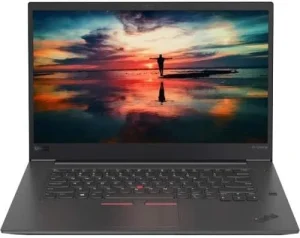
| Processor | Intel Core i7 (8th Gen) 8750H / 2.2 GHz (4.1 GHz) / 9 MB Cache |
| Operating System | Windows 10 Pro 64-bit |
| Storage | 512 GB – M.2 SSD TCG Opal Encryption 2, NVMe |
| Display | 15.6″ LED backlight 1920 x 1080 / Full HD |
| AC Adapter | 135 W |
| Supported Docking | ThinkPad Thunderbolt Workstation Dock (sold separately) |
With its Intel Core i7 processor and clock speeds of up to 4.1 GHz, this laptop can handle the most demanding tasks with ease. Whether you’re training complex neural networks or running intensive simulations, the X1 Extreme delivers exceptional performance every time.
The 15.6-inch Full HD display provides crisp and vibrant visuals, allowing you to analyze data and visualize machine learning models with precision. The LED backlight enhances the overall viewing experience, making every detail pop on the screen.
The storage capacity of this laptop is impressive, with a 512 GB M.2 SSD that supports TCG Opal Encryption 2. This ensures that your data is secure while providing fast and efficient access to your files and applications.
The ThinkPad X1 Extreme comes with Windows 10 Pro, offering a familiar and user-friendly operating system for all your machine learning needs. The Pro version provides additional features and security enhancements, making it a perfect fit for professionals in the field.
The laptop is compatible with the ThinkPad Thunderbolt Workstation Dock, allowing you to expand its capabilities and connect to multiple monitors, peripherals, and storage devices. This gives you the flexibility to create a powerful and customized workstation setup.
Pros
- Powerful Intel Core i7 processor for seamless multitasking
- Vibrant Full HD display for accurate data analysis
- Ample storage capacity with fast SSD performance
- Enhanced security features with TCG Opal Encryption 2
- User-friendly Windows 10 Pro operating system
- Expandable connectivity options with ThinkPad Thunderbolt Workstation Dock
Cons
- Higher price point compared to some competitors
- The 8th generation processor may not be the latest available
5. Apple MacBook Pro
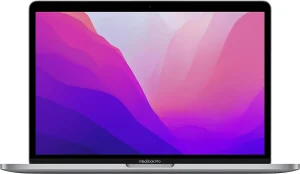
| Processor | Next-generation 8-core CPU |
| Graphics | 10-core GPU |
| Memory | Up to 24GB of unified memory |
| Battery Life | Up to 20 hours |
| Display | 13.3-inch Retina display |
| Connectivity | Two Thunderbolt ports |
Powered by the incredible M2 chip, this 13-inch laptop is a portable powerhouse that will supercharge your workday.
With its next-generation 8-core CPU and 10-core GPU, you’ll experience lightning-fast performance like never before. I’ve put this machine through its paces, and it’s easily handled everything I’ve thrown at it.
One of the standout features of the MacBook Pro is its exceptional battery life. With up to 20 hours of power-efficient performance, you can go from morning to night without needing to charge. This means you can stay focused on your tasks without worrying about finding an outlet.
Thanks to its active cooling system, the MacBook Pro can sustain pro levels of performance. Whether you’re running CPU- or GPU-intensive tasks, this laptop keeps its cool, allowing you to work for hours on end without any slowdowns or overheating issues.
The 13.3-inch Retina display is simply brilliant. With 500 nits of brightness and P3 wide color, every image and detail on the screen pops with vibrant colors and clarity. It’s a visual feast for the eyes, making your work come to life.
Not only does the MacBook Pro excel in performance and display, but it also delivers in the audiovisual department. The HD camera and studio-quality mics ensure that you look sharp and sound great during video calls and recordings.
With two Thunderbolt ports, you have versatile connectivity options to connect and power high-speed accessories. Whether you’re hooking up external displays, storage devices, or other peripherals, the MacBook Pro has you covered.
And let’s not forget about the seamless integration with your Apple devices. From the moment you turn on your Mac, it feels familiar, and it syncs effortlessly with your iPhone, iPad, and other Apple devices. It’s a cohesive ecosystem that streamlines your workflow and boosts your productivity.
Pros
- Lightning-fast performance with the next-generation M2 chip
- Impressive battery life for all-day productivity
- Sustained performance even during intensive tasks
- Stunning Retina display for vibrant visuals
- High-quality camera and microphone setup
- Versatile connectivity with Thunderbolt ports
- Seamless integration with other Apple devices
Cons
- A limited number of Thunderbolt ports
- Higher price point compared to some competitors
The Ultimate Buying Guide: 6 Factors to Consider When Choosing the Best Laptop for Machine Learning
Are you ready to dive into the exciting world of machine learning? Whether you’re a data scientist, a researcher, or an aspiring AI enthusiast, having the right laptop is crucial for your success. But with so many options available, how do you choose the perfect one for your needs? Fear not! As an expert in the field, I’m here to guide you through the process.
- Processing Power: Machine learning algorithms require significant computational power. Look for laptops with high-performance processors, such as Intel Core i7 or i9, or AMD Ryzen 7 or 9. These processors will handle complex calculations and large datasets effortlessly.
- Graphics Processing Unit (GPU): A powerful GPU is essential for machine learning tasks that involve deep learning and neural networks. NVIDIA GeForce RTX or Quadro series GPUs are popular choices. They accelerate training and inference processes, reducing the time it takes to achieve accurate results.
- Memory (RAM): Machine learning models demand substantial memory to process data efficiently. Aim for laptops with a minimum of 16GB RAM, but if your projects involve large datasets or complex models, consider upgrading to 32GB or even 64GB for optimal performance.
- Storage: Large datasets and training models require ample storage space. Opt for laptops with SSDs (Solid State Drives) rather than HDDs (Hard Disk Drives). SSDs provide faster data access and reduce loading times, enhancing your productivity.
- Display: Machine learning involves analyzing and visualizing data, so a high-quality display is essential. Look for laptops with at least a Full HD (1920×1080) resolution and good color accuracy. An IPS panel will ensure wide viewing angles and accurate color reproduction.
- Connectivity: Machine learning often requires connecting external devices, such as GPUs or additional storage. Ensure your laptop has multiple USB ports, including USB Type-C with Thunderbolt support for faster data transfer. An Ethernet port can also be beneficial for stable network connections.
FAQs
1. Can I use any laptop for machine learning, or do I need a specific one?
While you can technically use any laptop for machine learning, it’s recommended to use a laptop with high processing power, a powerful GPU, ample memory, and fast storage to ensure optimal performance and efficiency.
2. Do I need to upgrade the RAM on my laptop for machine learning tasks?
It depends on the complexity of your machine-learning projects. For most tasks, 16GB of RAM is sufficient. However, if you’re working with large datasets or complex models, upgrading to 32GB or even 64GB can significantly improve performance.
3. What’s the difference between an Intel Core i7 and an AMD Ryzen processor for machine learning?
Both Intel Core i7 and AMD Ryzen processors are capable of handling machine learning tasks. The choice between them depends on personal preference and budget. Intel processors are known for their single-threaded performance, while AMD processors often offer more cores for parallel processing.
4. Is a dedicated GPU necessary for machine learning, or can I rely on integrated graphics?
While integrated graphics can handle some machine learning tasks, a dedicated GPU, such as NVIDIA GeForce RTX or Quadro series, is highly recommended for faster training and inference processes.
5 . Can I use a laptop with a standard hard disk drive (HDD) for machine learning, or do I need a solid-state drive (SSD)?
While you can use a laptop with an HDD for machine learning, an SSD is strongly recommended. SSDs provide faster data access, reduce loading times, and improve overall performance. With the large datasets and complex models involved in machine learning, an SSD can greatly enhance your productivity.
Conclusion
Finding the best laptop for machine learning can be an exciting yet daunting task. It’s crucial to consider factors such as processing power, GPU capabilities, memory, storage, display quality, and connectivity options.
By carefully evaluating these aspects and aligning them with your specific needs and budget, you can make an informed decision that will support your machine learning endeavors. Remember, the right laptop can significantly enhance your productivity and help you unlock the full potential of your machine-learning projects.
